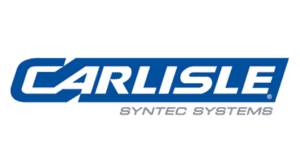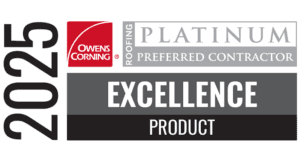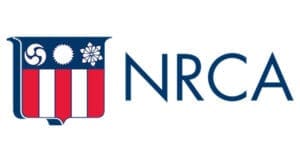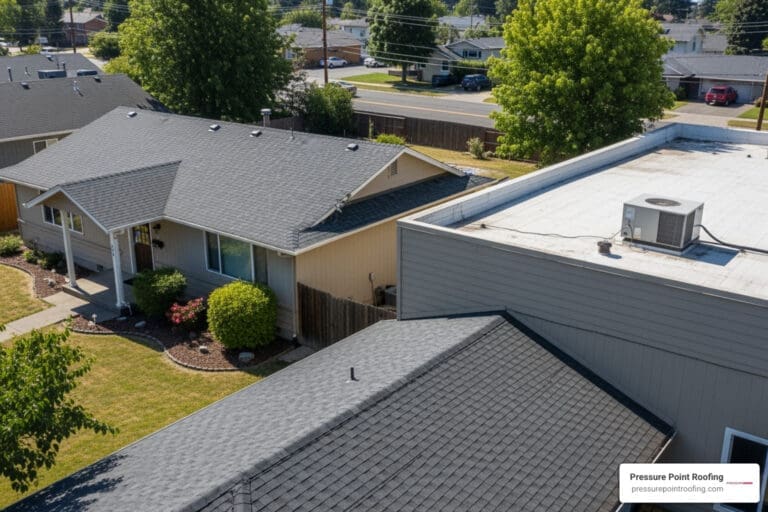Winter Weather and Your Commercial Roof
Winter weather poses unique challenges to commercial roofs, and understanding these impacts is crucial for maintaining the integrity of your building. Snow, ice,
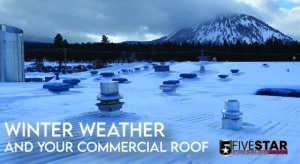 wind, and freezing temperatures can stress roofing materials, leading to potential damage and costly repairs if left unchecked. If you manage a facility, it’s critical to understand the challenges posed by winter weather and your commercial roof. This article explores how winter weather affects commercial roofs and what elements you should inspect during the colder months to ensure your roof remains in optimal condition.
wind, and freezing temperatures can stress roofing materials, leading to potential damage and costly repairs if left unchecked. If you manage a facility, it’s critical to understand the challenges posed by winter weather and your commercial roof. This article explores how winter weather affects commercial roofs and what elements you should inspect during the colder months to ensure your roof remains in optimal condition.
The Impact of Winter Weather on Your Commercial Roof
1. Snow Accumulation
Heavy snow can add significant weight to your roof. Flat and low-slope roofs are particularly vulnerable to structural strain, possibly leading to sagging, cracking, or even collapse in extreme cases. The risk is exacerbated if snow melts and refreezes, forming ice dams that prevent proper drainage.
2. Ice Formation
Ice presents a dual threat: it can damage roofing materials and interfere with drainage. Ice dams form when heat escapes through the roof, melting snow that then refreezes at the eaves. These dams block water flow, causing it to pool and potentially leak into the building. Additionally, freezing and thawing cycles can cause ice to expand in cracks and seams, leading to material deterioration.
3. Temperature Fluctuations
Rapid temperature changes can cause roofing materials to expand and contract. Over time, this can weaken membranes, seams, and fasteners, resulting in leaks and other structural issues. This thermal movement is especially problematic for metal roofs and other materials with high thermal expansion coefficients.
4. High Winds
Winter storms often bring high winds, which can loosen shingles, panels, and flashing. These vulnerabilities can lead to water intrusion and further damage during subsequent weather events if not addressed promptly.
5. Moisture and Condensation
Inadequate insulation or ventilation can cause warm air from the building interior to condense on the underside of the roof deck. This trapped moisture can promote mold growth, wood rot, and corrosion of metal components, all of which compromise the roof’s structural integrity.
Key Areas to Inspect During Winter
Regular inspections are vital to identify and address potential issues before they escalate. Here are the critical areas to examine:
1. Roof Membrane
Inspect the roof membrane for signs of cracks, blisters, or punctures. These vulnerabilities can allow water to seep into the underlying structure, causing leaks and compromising insulation.
2. Flashing and Seals
Check the flashing around vents, skylights, and other roof penetrations. Loose or damaged flashing can allow water to infiltrate the roof system. Ensure all seals and caulking are intact and properly adhered.
3. Gutters and Drains
Clear gutters, downspouts, and roof drains of debris to ensure proper water flow. Blocked drainage systems can lead to pooling water, which may freeze and cause further damage. Pay attention to areas prone to ice dam formation.
4. Roof Deck
Look for signs of sagging or deformation in the roof deck, which may indicate excessive snow load or underlying structural issues. Addressing these problems promptly can prevent more severe damage.
5. Insulation and Ventilation
Inspect the insulation and ventilation systems to ensure they are functioning effectively. Proper insulation minimizes heat loss, reducing the risk of ice dams, while adequate ventilation helps prevent moisture buildup.
6. Perimeter and Edge Details
Examine the roof’s perimeter for loose or missing edge materials. Strong winds can dislodge these components, leaving the roof vulnerable to further damage.
7. Accessories and Attachments
Check rooftop HVAC units, antennas, and other attachments to ensure they are securely fastened. Loose equipment can shift during storms, potentially damaging the roof or becoming a safety hazard.
Proactive Measures to Protect Your Roof
Taking preventive action can significantly reduce the likelihood of winter-related roof damage. Here are some steps to consider:
1. Schedule a Professional Inspection
Hiring a roofing professional like Pressure Point Roofing to conduct a comprehensive inspection ensures that potential issues are identified and addressed. Experts have the tools and experience to assess your roof’s condition thoroughly.
2. Remove Snow Safely
If heavy snow accumulates on your roof, use a roof rake or hire a professional snow removal service. Avoid using sharp tools or excessive force, as these can damage roofing materials.
3. Seal Cracks and Gaps
Address any visible cracks or gaps in the roof membrane, flashing, or seals to prevent water infiltration and thermal movement damage.
4. Upgrade Insulation and Ventilation
Enhancing your roof’s insulation and ventilation systems can mitigate many winter-related issues, such as ice dams and condensation.
5. Install Snow Guards
For sloped roofs, consider installing snow guards to prevent snow and ice from sliding off and causing damage to the roof or surrounding property.
6. Maintain Gutters and Drains
Regularly clean and inspect gutters, downspouts, and drains throughout the winter. Installing heated cables can also prevent ice buildup in these areas.
Manage Winter Weather Challenges for Your Commercial Roof with Pressure Point Roofing
At Pressure Point Roofing, we understand the unique challenges of winter weather and commercial roofs. Our experienced team provides comprehensive inspection, maintenance, and repair services to ensure your roof performs at its best throughout the season. Here’s why you should choose us as your trusted roofing professional:
- Expertise: With decades of experience, we have the knowledge and skills to address a wide range of roofing issues.
- Quality Materials: We use only the highest-quality materials and proven techniques to protect your roof.
- Comprehensive Services: From inspections to emergency repairs, we offer a full spectrum of roofing services tailored to your needs.
- Customer Focus: Your satisfaction is our top priority. We work closely with you to develop solutions that fit your budget and requirements.
Winter weather can significantly damage commercial roofs, but proactive maintenance and timely inspections can mitigate many of these challenges. By understanding the risks posed by snow, ice, and temperature fluctuations and taking steps to address them, you can extend the life of your roof and protect your investment.
Pressure Point Roofing is here to help you confidently navigate the winter season. Contact us today to schedule an inspection or learn more about our comprehensive roofing services. Together, we can ensure your roof withstands whatever winter throws its way.
Schedule a Consultation
By submitting this form, I agree to receive calls and text messages (including those sent using automated technology) from Pressure Point Roofing, LLC and its representatives at the number provided. Message and data rates may apply. Message frequency may vary. Consent is not required as a condition of purchase. Reply STOP to unsubscribe at any time.
Related Content
Partners and Awards

